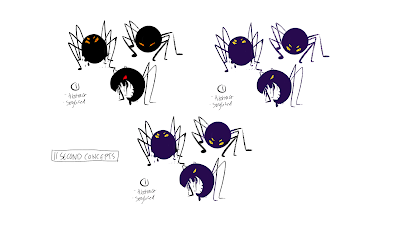New Character Development
- This week:
- I developed and created three characters I will animate for my performance tests.
- What went well:
- As I wanted to change the designs from last week and work with characters I am more comfortable animating, I decided to focus on creating animal character designs. This meant that the focus could be more on the performance/acting, rather than considering anatomy as much.
- I started by exploring a German Shepherd character design, who would fit the traits of a character who is arrogant and short-tempered, however I felt that this design was not working how I intended it to. I also found that I wanted to try some further design ideas, before making up my mind.
- In the end, I developed a bird character, a cat character and a dog. This also played into creating interesting personalities for each of them, as the cat character, who I have simply named Sally, is shy, lacking in confidence, but pretends to be confident in themselves (similarly to Dr Delbert Doppler). The bird, a Lovebird, is round and bubbly and finally the Chihuahua character is very angular-looking, arrogant and hot-headed. I tried not to let stereotypes of the animal impact the personalities as much, but allow the overall shape to aid with that (for example, you would associate Chihuahuas with energy and playfulness, rather than laziness and arrogance).
- Here are my developed designs:
- Using my knowledge developed from reading "The Illusion of Life" section on appeal and developing a better understand of fluid poses, from "Drawn to Life", I found it easier to pose and develop more appealing characters.
- What could be improved:
- These characters need final, quick turnarounds developing and some test animations. I need to understand how they would move an act better, by possibly exploring facial expressions and producing some rough tests.
- Character design is only a small part of this development, but it is something I would like to improve upon for future projects, such as creating more complex designs and a variety of shapes to fully explore every single design potential.
- Next week:
- I will be finishing these designs, by illustrating a quick turnaround sheet (front and side-view) and then testing them in animation.











































